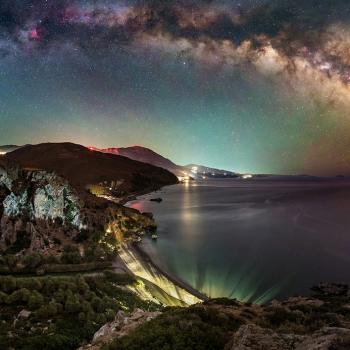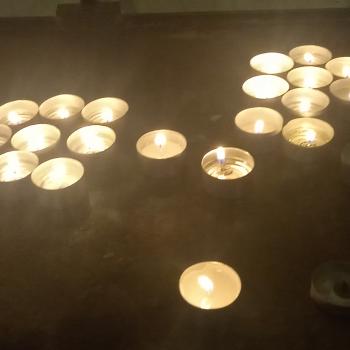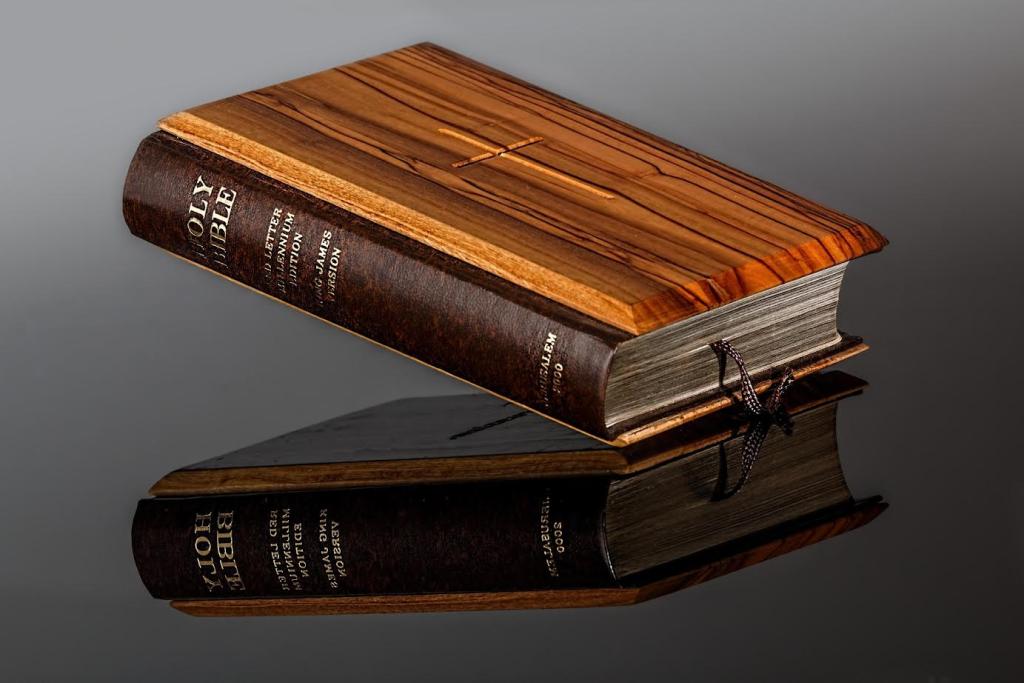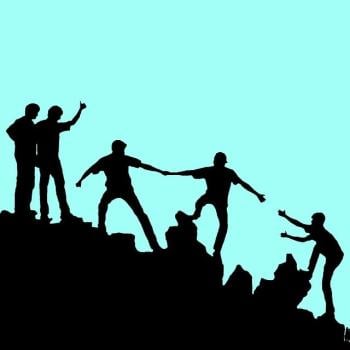Polarity certainly exists in nature at the atomic level, in the dance of attraction between protons and electrons -- however, trying to identify one or the other as "female" or "male" seems purely silly. And that dance takes place, we now know, in a complex do-si-do with other forces: the strong force, the weak force, gravity, and undoubtedly others we don't even know of yet. Rather than a simple, bipolar universe, we might do better to conceive of a web of forces and energies holding the universe in dynamic tension. (p. 234, 267, 20th ann. ed.)
Starhawk speaks of this connective web of life force as the erotic. In doing so, she draws on a theological tradition that defines the erotic as something deeper and also broader than sexuality. Early in the 20th century, influential psychologist C.G. Jung defined eros as a relational principle, "the great binder and loosener" within the psyche, between people, and between the individual and the world. In the 1970s, black lesbian feminist Audre Lorde described the erotic as the impulse to flourish, a desire for pleasure that drives one to resist oppression and strive toward a joyful, satisfying, and meaningful life. For Lorde, the erotic can be expressed sexually in the bedroom, but it is also present in every moment of intense engagement with the world, particularly moments that are celebratory or creative. Today, Christian and post-Christian theologians are busy constructing what they call a "theology of eros" (see, for example, the collection Toward a Theology of Eros, eds. Burren and Keller). An erotic theology is one that emphasizes physical pleasure, embodiment, desire, and relationship -- but without the necessity of male-female polarity, or even a more metaphorical masculine-feminine polarity.
Victor Anderson, who was the source of the story that sparked Starhawk's reflections on the erotic, was also prone to tell his students, "Perceive first, then believe." My experiences with energy exchange and magick fit Starhawk's web of forces better than they do a bipolar universe. At the same time, however, I do not find the notion of polarity useless. Whenever we focus our attention on another, whether that Other is a person, a flower, or even a part of our own selves, a temporary state of polarity comes into being: Self and Other, I and Thou. It's been my experience that the pull of life force, of attraction (not always sexual), and of connection and desire is stronger with some pairings than others. It's true that erotic connections can be cultivated, and as part of my spiritual practice, I have done so with other people, with the land and spirits where I live, and with parts of myself that I struggle to love. Many kinds of polarity are possible, and male-female is only one -- one that is not naturally a strong force for every Pagan practitioner.
I think there is a truth in the early Wiccan notion of male-female polarity: in Western culture, there is often limited emotional compatibility between straight men and straight men or between straight women and straight women -- and this, I suspect, was much more true in the 1950s, when Wicca first became public. Our culture does not provide strong social structures for creating bonds of intimate friendship, and instead worships romantic love through sentimental films and endless love songs. Sexual attraction between straight women and straight men is both culturally encouraged and (for many people) biologically hardwired, and as result, it is a strong force that can be easily used to drive magickal workings. But other forms of sexual attraction can be also be utilized, as well as initially weaker forces such as emotional and intellectual compatibility or non-sexual forms of erotic connection.
In my work as a massage therapist, I sometimes meet clients with whom I feel an instant connection; before they even get on the massage table, I know that when we're finished, they'll be gushing and ecstatically grateful. Much as I hate to admit it, these reactions are not due to my amazing talent as a therapist, but rather to a natural energetic sympathy that, as a trained witch, I am able to sense. Because of that polarity -- arising from any number of factors of which I am not consciously aware -- my ability to mediate energy and help such clients facilitate their healing is greatly increased. Most of my clients are women, however. This energetic polarity is real, but it has little or nothing to do with gender (although it may have much to do with my ability to project and theirs to receive).
If the Pagan community were to embrace the concept of polarity without its being rigidly linked with gender, a whole new model of how to do effective magick might arise, based on identifying and then using strong complementarities between individuals, between groups, or between groups and their environments. Some Pagan traditions already encourage practitioners to draw down deities of a gender other than their own, and to practice manifesting energies that are distinctly different from their everyday personalities. By cultivating such magickal flexibility, groups can hone the ability to generate a variety of kinds of strong connections. What, for example, is the relationship between fire and water, and what happens when they come together in steam? What pulls earth and air to become a dust storm? These elemental examples are basic, but they suggest the kinds of magickal thinking that a notion of polarity decoupled from gender might bring to Pagan theology and practice. In the future, perhaps Pagans will be able to more easily speak of a polarity that can include the spark of connection between any two people, regardless of sexual orientation or gender identity -- erotic connections that are not necessarily sexual, but are based on intimacy, sympathy, and trust.




